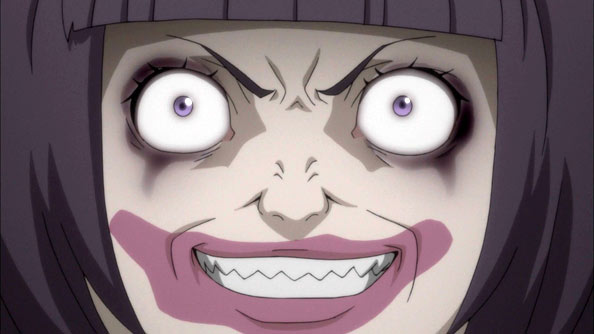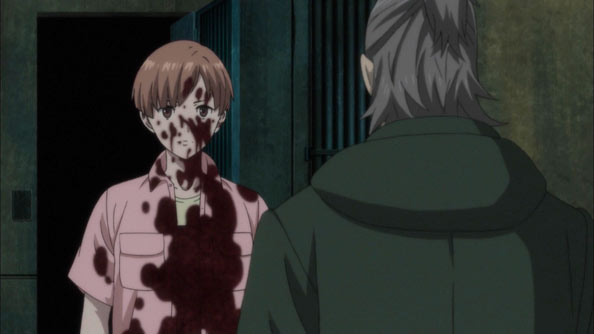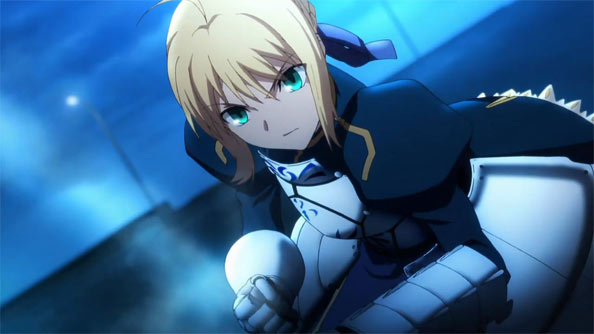Before returning to the alley, Kabukichou Sherlock goes back to the night of poor Alex Moran’s murder. James visits her in her room, planning to help her sneak out of the house to meet his friends at the Detective House. We learn “Moriarty” is just a nickname for the East Side.
On the West Side, he’s James Moran, son of the Ward Mayor and Alex’s twin brother. James is delayed by their father (who is hosting a Christmas party), and by the time he catches up in the tunnel between West and East, Alex is already dead. From that night, James swore the murderer would pay.
Back to the alley, where Irene reveals she indeed faked her death. She, James and Sherlock get Watson caught up. When it was determined Jack wanted the USB, they let him believe Irene succumbed to her injuries, then used Watson as a “hook” to bait him.
Kyougoku Fuyuto is the one who tried to get the drive from Watson, and Sherlock intentionally frayed their friendship so that Watson would be more likely to steal it. But Kyougoku isn’t Jack, nor was he willingly working on his behalf.
For the rest of the reveal, Sherlock breaks out his rakugo routine, this time on the stage at Bar Pipecat. He doesn’t have to get far into his story before one detective after another realize how Kyougoku was compromised by love, fed Peyote, and manipulated by the real Jack, turn around to find that Maki-chan, who had been sitting at the bar, has vanished.
Sherlock continues his rakugo while he and Watson race to the spot where they believe they’ll run into Maki-chan, who is, in fact, Jack. A psychopath who murdered and took what he himself desperately wanted, but didn’t have: female reproductive organs.
Once Sherlock’s explanations make it impossible to continue his “Maki-chan” persona, Jack cracks, revealing his true voice and sick, twisted personality. Sherlock makes sure to catch his ravings on a voice recorder, wrapping up the case with a nice neat bow.
Only it seems Jack won’t get to face a trial by jury, as James can’t stop himself from slitting his throat. Mind you, Jack tries to fight the compulsion for revenge, but the final provocation from Jack was that he ate the part he cut out of Alex, as was his M.O.
By murdering Jack in cold blood, James no doubt faces criminal charges for murder himself, unless of course the assembled witnesses to the crime all agree it was a justified killing. I’m leaning towards him spending at least some time behind bars.
I honestly didn’t suspect Maki-chan in the least…until the scene of her in bed with Kyougoku. What at first looked like a virgin having his first ride was actually the effects of the Peyote, while Maki-chan’s brief smirk of satisfaction was a sign something else was afoot.
That said, it wasn’t until Sherlock’s rakugo began that I realized Kyougoku was being used by Jack, and the pieces began to fall snugly and satisfyingly into place. Very nicely done.





















